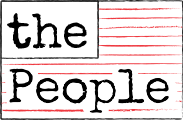Civics U: American and Ethnic Identities: Either-Or, or Both-And
What does it mean to be (an) American? Can a person be American and something in addition? What is at the core of the American identity?
We all have multiple identities such as age, political affiliation, occupation, regional origin, or others, that are easily identified. Thus, a person may be (often simultaneously) a carpenter, a New Yorker, a Republican, a young person, a baker, an eighth grader, a woman, a brother, an immigrant, an uncle, an alumnus, a professional, and so on.
At the same time, everyone has an ethnic identity (or identities). Persons may be Italian, Jewish, Japanese, Dutch, Croatian, Mexican, etc. Or, in fuller form, Italian American, Jewish American, etc., or a mix of various identities and nationalities. And broader labels may also be used, such as Native American, Asian American, African American, EuroAmerican; that cover a large number of specific ethnic and identity groups. Some people have little consciousness of their specific ethnic background and think of themselves simply as “American”.
‘Ethnic’ here refers to a person’s or a people’s cultural background and affiliation. It is not meant to refer to a person’s racial background and identity, though often there is correlation between the two.
The United States consists of people of many, many ethnic – i.e., cultural backgrounds. Sometimes these are visible and celebrated directly, such as at events like Greek festivals (by Greek Orthodox Churches with Greek food and dances); Czech Days at Tabor, SD; St. Patrick’s Day; Kwanzaa; Chinese New Year; and Native American powwows.
Meanwhile the cultural origins and nature of many American practices are sometimes taken for granted. For example, the national holidays of Thanksgiving, Christmas, and Easter clearly reflect Christian beliefs as well as European or EuroAmerican forms of expression.
This is true also of school culture and curriculum. For example, school choral music programs historically teach the Western classical music and sacred music tradition. For this writer, who is German American (i.e., of German descent), there was no overt study of German culture in school. But when the music of composers Bach, Beethoven, Brahms, and Mozart was studied, a positive reinforcement of German identity was implicit.
The problem here is not one of commission. These composers’ music is worthy of study. But the problem in education has been one of omission. School curriculum has not similarly covered the people and practices that represent the heritage and identity of students, parents, and communities of hundreds of non-European or non-EuroAmerican cultural backgrounds. The cultural values, the talents of artists and leaders, and the knowledge of stories and histories of many groups has often been missed and ignored.
To correct this, some states have attempted to develop more culturally responsive curriculum and pedagogy, though implementing this has been limited.
The state of California is currently addressing this issue by requiring students to complete a one-semester course in ethnic studies to graduate from high school. This is opposed by folks who associate it with the teaching of Critical Race Theory and ideas of white supremacy, and think that it creates division between groups.
At the same time, there are practical problems in implementing ethnic studies: one is that there are too many specific ethnic/cultural identities and histories and cultures to treat each fully; a second is that teachers have not been trained in cultural anthropology and ethnology methods that can be used to teach about the nature of culture, and to then describe and analyze many different cultures; a third is that many of a culture’s concepts and values are embedded in the group’s traditional language, and learning enough of various languages to share such insights in teaching is difficult. It requires the work or assistance of speakers of the respective languages, linguists, and appropriately trained teachers.
Nevertheless, ideally one function of school curriculum should be to nurture students’ understanding and appreciation of their own as well as others’ identities and heritages while still teaching the core American values and heritage expressed in the Declaration of Independence, the Bill of Rights, and other foundational documents and principles.
There is a complexity here. The foundational American value of freedom includes freedom of religion, which often involves freedom of language and culture. But it is possible that in some cases cultural beliefs and practices may conflict with historic dominant American culture or law, or that the dominant culture may suppress or prohibit certain practices of specific cultures or subcultures. Some people want America to be a melting pot where all groups become assimilated. Others see America as more like a tossed salad where all groups can retain their own uniquenesses.
Are the American identity and various ethnic identities compatible? Can we have both-and, rather than either – or? An American identity and culture devoid of multiple ethnicities, identities, and heritages would seem to be hollow, as would having just a conglomerate of identities and cultures without the common bond of historic and national American freedoms and values.

